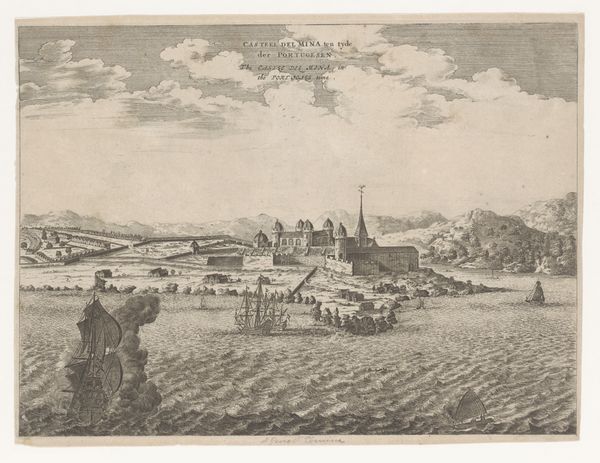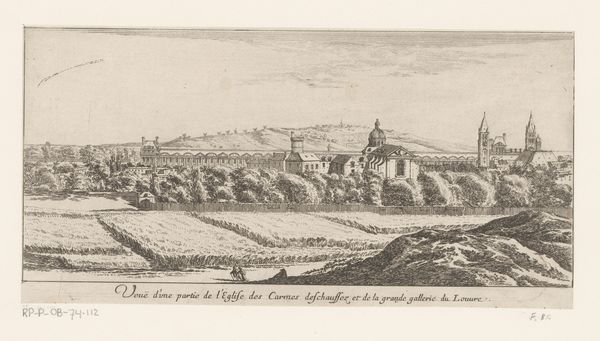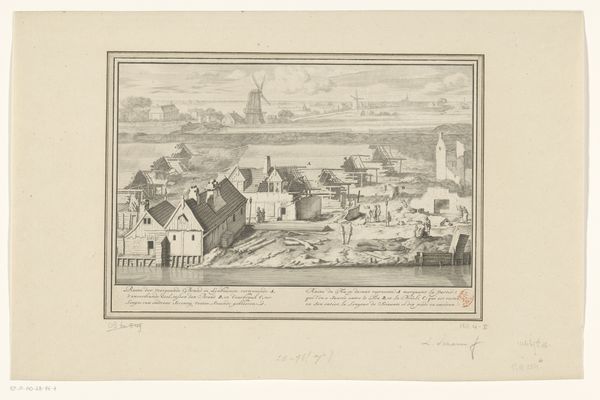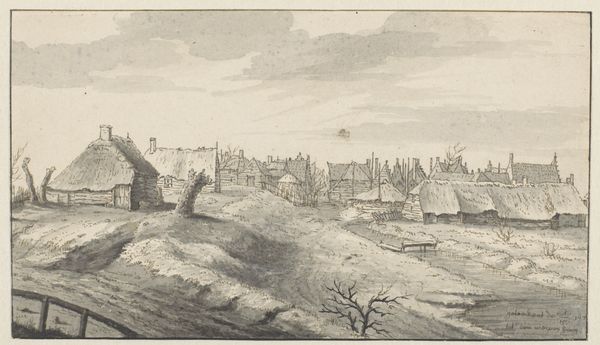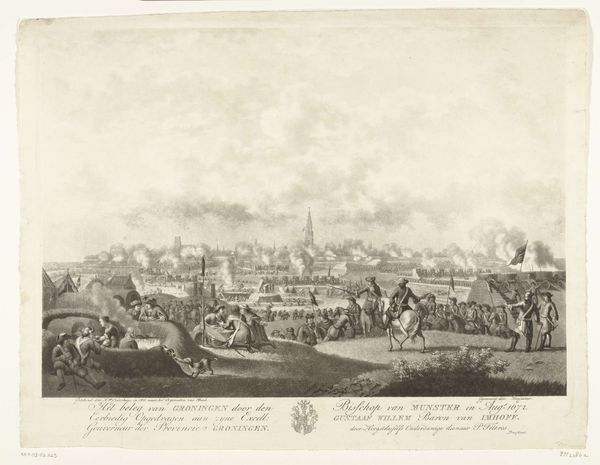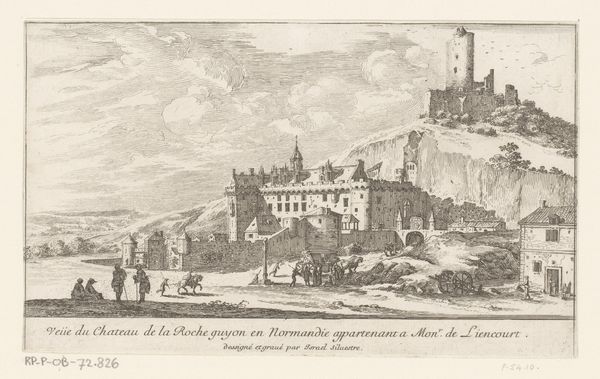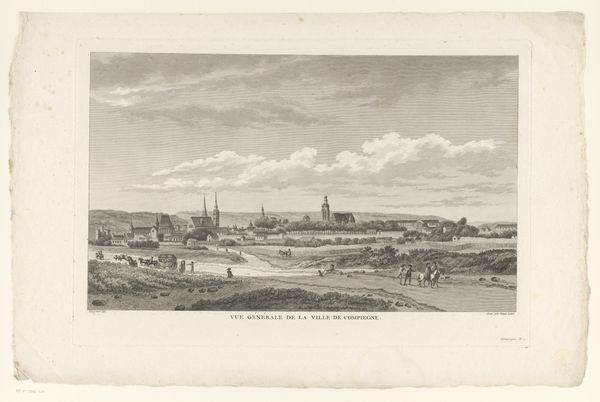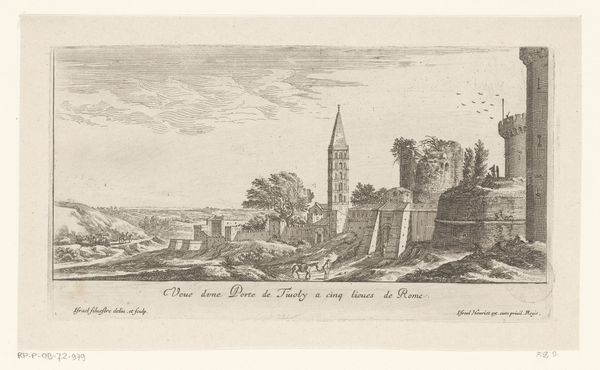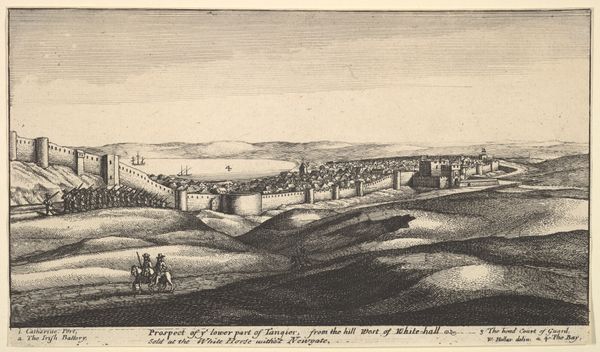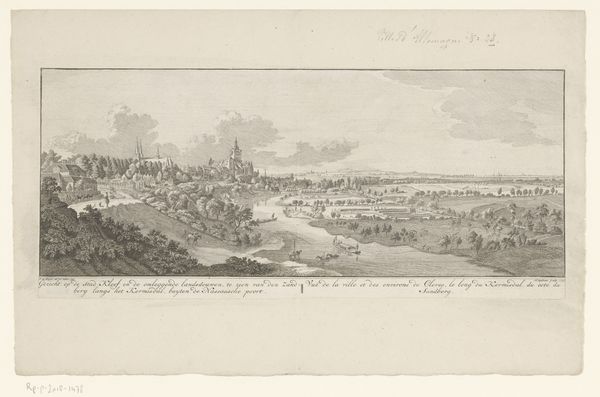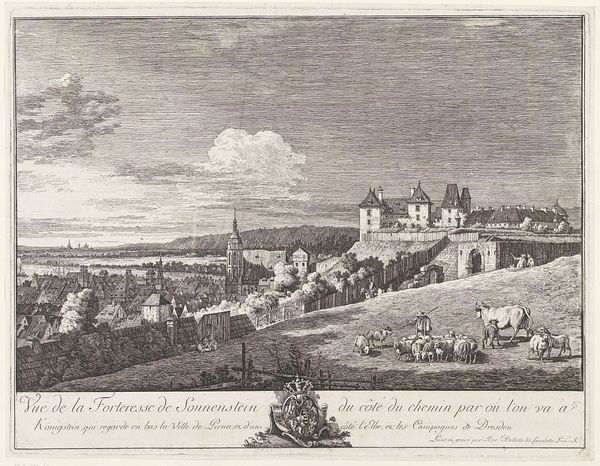
Prospect of the inner part of Tangier, with the upper Castle, from South-East 1669 - 1673
0:00
0:00
drawing, print, etching, engraving
#
drawing
#
baroque
# print
#
etching
#
human-figures
#
landscape
#
house
#
figuration
#
line
#
cityscape
#
history-painting
#
engraving
Dimensions: Sheet: 4 15/16 × 8 9/16 in. (12.6 × 21.8 cm)
Copyright: Public Domain
Editor: Here we have Wenceslaus Hollar’s etching, "Prospect of the inner part of Tangier, with the upper Castle, from South-East," created between 1669 and 1673. The stark contrasts create this sort of intense, looming atmosphere, despite being a cityscape. What grabs your attention when you look at this work? Curator: Well, isn't it fascinating how Hollar's intricate lines make Tangier appear both fortified and vulnerable at once? It’s almost dreamlike, the way the detail fades into the hazy distance. You feel the weight of history, the sense of a place caught between worlds, doesn't it strike you that way? Consider that Hollar was commissioned to record places like this; what does it say about how Europeans viewed these faraway holdings, eh? Does this make you think of mapping, recording, and maybe something else? Editor: It does feel like more than just a simple record. There's almost a romantic quality, but one tinged with a sense of power, that somebody commissioned this image. I guess, that kind of ties in with Baroque art a bit? Curator: Precisely. The Baroque wasn't just about dramatic flourishes; it was about capturing a sense of place and power, and maybe of loss as well, like nostalgia frozen in ink. The viewpoint pulls you into Tangier's story, but I think that one cannot separate what has been depicted with the motivation and resources to bring it into view. Who are we within the image? Or what do we desire to be within this artwork? Does Hollar allow you in? Editor: Thinking about the way it's framed makes it more interesting to consider the push and pull within the artwork and from a wider context too. Thank you. Curator: My pleasure. Art always benefits from conversation.
Comments
No comments
Be the first to comment and join the conversation on the ultimate creative platform.

